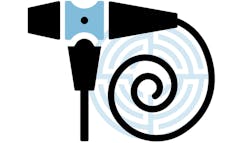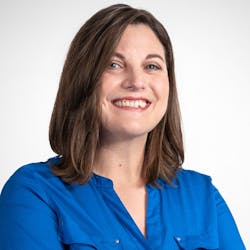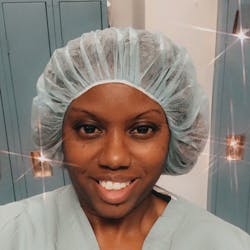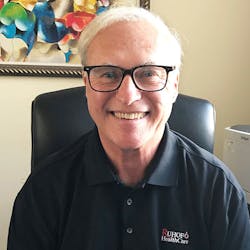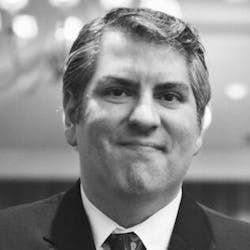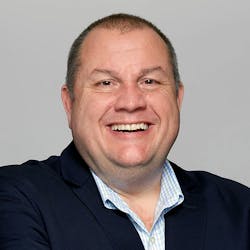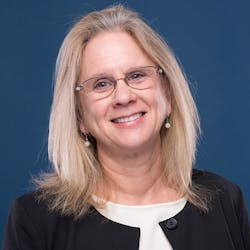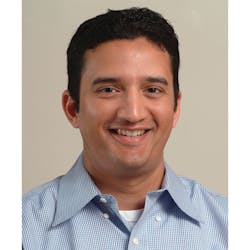The Association of periOperative Registered Nurses (AORN) recently released its newly revised Guideline for Processing Flexible Endoscopes, with recommendations for hand-over communication to decontamination personnel, borescope inspection, cleaning verification tests, and drying processed endoscopes.
HPN gathered insights from AORN, Central Sterile Supply Department (CSSD) professionals, endoscope manufacturers, and reprocessing solutions providers on how these new guidelines align with/differ from the ANSI/AAMI ST91:2021 Comprehensive guide to flexible and semi-rigid endoscope processing in health care facilities, and their impact on CSSD teams.
Why the changes?
“Flexible endoscope processing remains a critically important patient safety issue because there have been more outbreaks associated with these complex endoscopes than any other medical device. When the AORN Guideline for Processing Flexible Endoscopes came up for its 5-year revision cycle, we knew there were many important new published studies on the topic in addition to timing the update with the release of the updated ANSI/AAMI ST91:2021.
What are the changes?
In an AORN Periop Today article, Wood said while there are many changes in the new guidelines, these four major practice changes can “help teams fall within the narrow margin for safety when processing flexible endoscopes.”
- Redefine hand-over communication: Refine the hand-over process from the transporter to decontamination personnel, recommending direct communication and documentation including the time the point-of-use treatment was completed and whether the endoscope was exposed to factors during the procedure that may require additional cleaning.
- Borescope inspection: Use a clean borescope to visually inspect accessible channels of flexible endoscopes before sterilization or high-level disinfection (HLD). Borescopes allow for visual inspection of internal channels and may identify damage or debris that would otherwise be undetected.
- Cleaning verification tests: Use cleaning verification tests to verify manual cleaning of flexible endoscopes before sterilization or HLD. Cleaning verification testing such as with ATP, protein, carbohydrate, or hemoglobin is recommended to provide an objective method for verifying cleanliness.
- Drying processed endoscopes: Dry all accessible channels of HLD-processed flexible endoscopes in accordance with the manufacturer’s instructions for use (IFU) with pressure-regulated instrument air or HEPA-filtered air for a minimum of 10 minutes or until no visible moisture remains.
How do the new guidelines compare to ANSI/AAMI ST91:2021?
“There are many similarities, which will make it easier for sterile processing teams to implement recommendations into practice,” Wood explained. “The main difference is that the AORN Guideline cites research that is critically appraised and systematically reviewed, so you will see a ranking for the level of evidence and scores for each article in the reference list.”
“For the major changes to practice, there is harmony, such as performing cleaning verification testing, borescope inspection, and drying endoscopes after high-level disinfection for a minimum of 10 minutes with pressure-regulated instrument or HEPA-filtered air,” she added. “The AORN Guideline is unique in that is has a review of evidence comparing single-use and reusable flexible endoscopes that will be very helpful when making evidence-based purchasing decisions.”
“Both the ANSI/AAMI ST91 and AORN’s Flexible Endoscope Processing Guideline provide guidance in the processing of flexible endoscopes, and they emphasize the importance of training and education for personnel to process a safe endoscope for patient care,” said Klacik. “Still, there are differences between the two documents.”
“AORN’s guideline recommends using an automated process for HLD instead of a manual process because automated processes may be more efficient and consistent and may reduce personnel exposure to high-level disinfectants. ANSI/AAMI ST91 provides detailed guidance on how to manually perform high-level disinfection on flexible endoscopes, as well as properly use automatic endoscope reprocessors (AER) and liquid chemical sterilant processing systems (LCSP),” Klacik added.
What impact will these changes have on CSSD teams?
Wood acknowledged how some of the guideline changes will “take time to work out the kinks,” especially those around cleaning verification testing and borescope inspection.
“Leaders should conduct a gap analysis to determine what changes are needed, and then form a team to evaluate feasibility, conduct a trial, and develop an implementation plan,” said Wood. “Cleaning verification testing and borescope inspection may be challenging with regards to identification and interpretation of findings, so a clear protocol and competency verification will be essential.”
“Start small with your highest risk endoscopes (e.g., bronchoscopes, ureteroscopes, duodenoscopes) and limiting the frequency of inspection,” Wood added. “As your team becomes before proficient, you can expand your program. Remember Rome wasn’t built in a day!”
“Technicians want to do what is correct and work within the guidelines, but it can be very challenging,” said Holder. “Most of the time the Endo suite functions like its own community, performing procedures and processing scopes in a small decontamination room. When working in CSSD you may hear about HLD but are not trained on it because it happens outside of the department. Processing of instruments and devices should all take place in the CSSD, and technicians should be trained on all techniques, but that is not the reality today.”
“It is not up to the SPD technician, supervisor or department to purchase endoscope drying cabinets or boroscopes, it is the facility’s decision whether to allocate resources to these purchases,” Holder added. “Perhaps it is a financial reason preventing the acquisition of this equipment. If the facility doesn’t come into alignment with AAMI or AORN guidelines on endoscope processing equipment, that leaves the technician to do the best they can with what they have. You can only do what the facility allows you to do, and that gets frustrating.”
Which changes will be the most impactful on the CSSD?
When asked which of the four major practice changes will have the greatest impact on CSSD teams with regards to endoscope reprocessing workflows, here were the responses from the others interviewed on the topic.
Ron Banach, Dir. of Clinical Education & Training, Ruhof
“ATP testing is both reliable and quick – providing results in just 15 seconds—and is also easy to use. After manual cleaning at the sink, the endoscope’s surfaces and channels are swabbed to collect ATP, after which the test swab is placed in a handheld luminometer to measure the level of ATP collected. The results will immediately determine if the effectiveness of the cleaning process is acceptable, and the endoscope can then move on to HLD or sterilization.
“Beyond endoscope reprocessing, an ATP contamination system can be used throughout your healthcare facility for verifying the efficacy of cleaning protocols for all surfaces and surgical instruments. For the crucial detection of contamination and an uninterrupted cleaning regimen there is no better testing program than one that utilizes an ATP testing system.”
Christian Escobar, Director of Marketing, Endoscopy, Ambu
“Since reusable endoscopes are used across a wide variety of settings and the interior channel wear, tear and damage can present in very subjective ways, the time it takes to perform this vital reprocessing efficacy step could take longer than expected, creating workflow challenges in busy settings. I expect implementing all the recommendations for reusable endoscopes will be daunting, though there are clear reasons to do so.
“For CSSD leadership, it’s important to take into account both short- and long-term planning for solving the demand crunch and complexity challenge. This will provide relief for staff and an ideal compliance solution for infection prevention and quality.”
Crit Fisher, CST, FAST, Director, On-site Service & Operations, KARL STORZ Endoscopy-America
Angela Lewellyn, CRCST, CER, CHL, LPN, Director of Development & Research, Advantage Support Services
Suneil Mandava, Founder & CEO, Mobile Aspects
“Drying the channels of scopes, as recommended by AORN and AAMI, adds time to the reprocessing time of the scope. This will increase frustrations with physicians and staff. Hospitals must find a way to meet these new guidelines, while minimizing time. Solutions, such as our iRIScope Channel Drying systems, meet the 10-minute drying time guidelines of several agencies without adding a minute more for high volume centers.”
What role should the CSSD play in pre-purchase evaluation of flexible endoscopes?
To Holder’s point that many CSSDs do not have the required equipment to comply with the AORN guidelines, perhaps those departments responsible for reprocessing flexible endoscopes should have a say on the procurement of these complex devices.
Another key change in AORN’s guideline is related to the pre-purchase evaluation of single-use and reusable, flexible endoscopes, including the role of the CSSD team. When asked what role the CSSD team should play in this evaluation process, here were the responses from individuals interviewed on the topic.
Escobar
“One area ripe for impact is the inclusion of single-use endoscopes in the pre-purchase planning section of the guidelines. This is perhaps the first time that CSSD and endoscopy management have guidance on how to strategically handle the expansion of endoscopy use without increasing labor and complexity for CSSD staff.
“Consider outpatient clinics, on campus and off, where recommendations call for scope handling and transportation to be highly documented and CSSD reprocessing routines can’t be replicated. Single-use is an ideal solution for workflow, readiness, and alleviating the pressure on CSSD to turn around equipment quickly.”
Fisher
“While there are some CSSD teams that are involved in the evaluation process, many departments learn about the clinical choices after the fact. A single use solution may assist in the costs and difficulties of reprocessing re-usable scopes, but it will put pressures on PAR levels and supply chain management.”
Klacik
“AORN recommends that before the purchase of flexible endoscopes, equipment or supplies that will be used for processing, an interdisciplinary team be convened to develop a standardized process for product evaluation and selection. Having the correct people on the interdisciplinary team is essential, and this revised guideline suggests key stakeholders, including Sterile Processing professionals, to participate on this team.
“This recommendation also provides a list of what to evaluate during product reviews, and specific criteria are identified to review flexible endoscopes, AERs, storage cabinets, borescopes, cleaning solutions, and detergents.
“In regard to purchasing flexible endoscope processing equipment, ANSI/AAMI ST91 includes an Annex, ‘Purchase considerations in selecting AERs and LCSPS.’ AORN has also added a new recommendation on purchasing decisions surrounding single-use or reusable flexible endoscopes and accessories; this revised guideline provides criteria to review when making these decisions.”
Lewellyn
“The CSSD contributes valuable information to the pre-purchasing process of reusable endoscopes. They will ask questions about the item that other team members may not consider. Not only will they request the manufacturer’s IFU that will provide the decontamination, assembling, inspection, and sterilization/HLD information, they will also ask if the sterilization department has the equipment to reprocess the endoscope.
“The equipment to consider upon purchasing a new is instrument is the sterilizer, AER, HLD equipment, a drying cabinet and others. But, just as necessary, they will request information about the inspection tools needed to properly clean and inspect the instrument during the decontamination and assembling tasks of processing. Some may be the correct brushes, the expected usage of those brushes, and if they will be able to have access to those inspection tools consistently.
“They will also need to consider if the department has the staff capacity to reprocess the brushes if they are not disposable. The staff in CSSD is usually pushed to complete the volume of instrument volume they currently have, so adding another task of reprocessing brushes could be daunting. Those reusable brushes should also be added to the in-service when initiating the new reusable endoscope. The collective team must consider the residual duties specified by the tool. Not only will they have to reprocess consistently, but they must also keep track of the number of times it was processed by documenting the reprocessing task according to the brush manufacturer’s IFU.”
Mandava
“CSSD is very important in this process. CSSD should be looking at both single use and reusable flexible endoscopes. For reusable, they should be reviewing the IFUs from the manufacturers to properly clean the scopes. Additionally, they should be evaluating whether they have appropriate documentation processes and systems to meet regulatory guidelines. If there is a delta, they should be contacting industry experts, such as at Mobile Aspects, to review the gap analysis and help them close the gap. For single-use items, CSSD should be evaluating how those items should be ordered, stored and documented for regulatory purposes.”
What resources are available to help CSSD teams?
As Holder and Wood indicated, it is unreasonable to believe these changes can happen overnight. When asked what resources are available to help CSSD teams implement the new guidelines, Fisher and Mandava offered these suggestions.
Banach
“Using Ruhof’s new ATP Complete 2, the next generation of contamination monitoring technology, CSSD teams can be confident that their endoscopes, surgical instruments, and surfaces are indeed clean. ATP Complete 2 is a quick, easy to use cloud-based cleaning monitoring system to help hospitals and other healthcare organizations achieve optimal standardized cleaning levels. Advanced features include a smart handheld mobile platform, WiFi connectivity, infinite users and test points, customizable dashboard, RFID reader, user friendly interface and more.”
Fisher
“There are plenty of studies out there pointing to the most effective use of time to keep the department running efficiently while maintaining the highest standards. There is inspection/testing equipment that have various applications to achieve the results indicated by these recommendations. Ease of use is something that you want to be able to look for in a product.”
Mandava
“Mobile Aspects’ iRIScope solution is a simple way to meet the new endoscope drying guidelines while minimizing time, space, and cost impacts. Our iRIScope solution dries the channel in 10 minutes, and not a minute more. Our compressors are built into our systems without taking up valuable real estate in the hospital. They can be up and running in a matter of 30 days for a hospital. We have had several hospitals who asked us to install quickly before a regulatory visit and they were up and running within weeks.”
What is one piece of advice for CSSD teams regarding endoscope reprocessing?
Beyond the updated AORN guidelines, HPN asked the article contributors for their general advice on effectively and safely reprocessing scopes.
Banach
“I would suggest that the CSSD teams work closely with their respective Endoscopy and OR departments to ensure endoscopes are kept moist during transport and an effective pre-cleaning treatment program is followed.”
Escobar
“My biggest piece of advice is to incorporate long-range planning, since endoscopy volumes are likely to continue increasing. Look at all available options in reusable and single use to best plan out what will support high-volume patient throughput without straining CSSD staff and systems.
“There’s a real opportunity to allocate single-use to offset the expense of additional reprocessing equipment, to limit the documentation needs, eliminate cross-infection risks, and support critical areas of patient care that require endoscopes be ready when needed.”
Fisher
“Make sure that all the staff is trained and competent on the IFUs and reprocessing instructions for the flexible scope portfolio. Following these steps helps to assure that the scope is reprocessed in a manner to rid it of bioburden and make it safe for patient use. Finally, take pride in the critical role that the CSSD team plays in the continuum of care. You may be the last person to touch that medical device before it is used on a patient. That is a very humbling feeling.”
Lewellyn
“When reprocessing endoscopes, the CSSD should initiate two or three Super-Users. The Super-Users role is defined by having in-depth knowledge of the design intricacies of each endoscope used, the processing steps recommended by the manufacturers, and best practice recommendations of AORN, SGNA, HSPA, the CDC, and others. The position/s must be educated about the MIFU and standards of care with extensive hands-on training by a vendor or an experienced re-processor that has completed a high competency level.
“We at Advantage Support have had the privilege of educating and training endoscope reprocessing technicians to a full competency using instrument instructions for use and industry resources. An excellent resource for the educator/trainers of the Super-Users is the Second edition of the Healthcare Sterile Processing Association (HSPA) Endoscope Reprocessing Manual. Many chapters provide step-by-step instructions from the point of use to the sterilization/HLD tasks. This manual will also help prepare the technician to achieve a Certified Endoscope Reprocessor (CER) status.
“As the CSSD, OR leaders, and their customers successfully achieve consistent delivery of endoscopes to the end-users, the Super Users can be not only the ‘go-to’ experts for the department but also advance the department by cross-training all technicians to the proper care and handling of endoscopes.”
Mandava
“The rules and regulations around endoscope reprocessing are constantly changing. Be ready for it, and not surprised. Most of our hospitals clients are looking at the guidelines and purchasing our systems to ensure they meet guidelines today and can meet guidelines in the future.”
About the Author
Kara Nadeau
Senior Contributing Editor
Kara Nadeau is Sterile Processing Editor for Healthcare Purchasing News.
